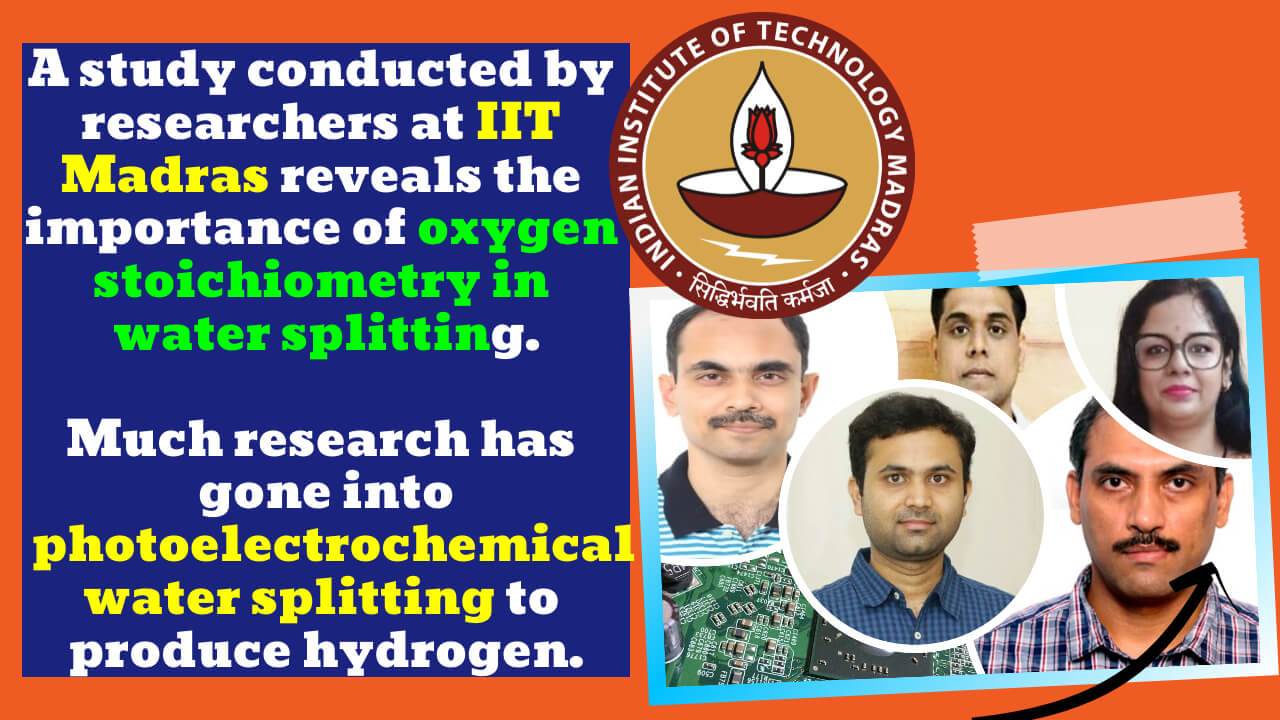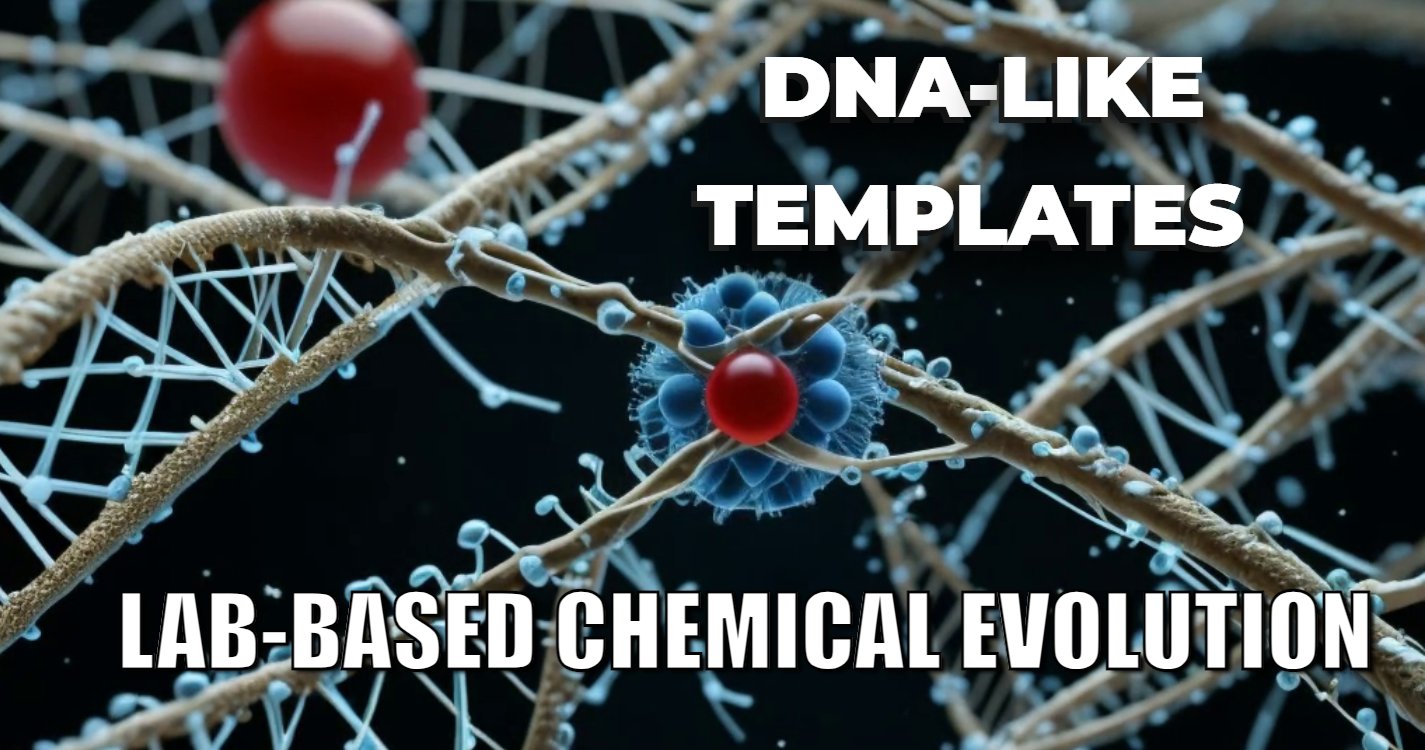Producing hydrogen as an energy source could meet most global energy demands. Much research has gone into photoelectrochemical water splitting to produce hydrogen. Titanium dioxide is used in photovoltaics and photocatalysis. It produced zinc oxide/antimony sulphide (ZnO/Sb2S3) and titanium dioxide/antimonium sulphide (TiO2/AS). Air and hydrogen annealing of ZnO and TiO2 changed the oxygen stoichiometry.
Key Highlight:
- The importance of oxygen stoichiometry in water splitting has been revealed by researchers at IIT Madras in a study.
- This process included zinc oxide production with antimony sulphide (ZnO/Sb2S3) and titanium dioxide with antimony sulphide (TiO2/Sb2S3).
- Annealing in air and hydrogen changed the oxygen stoichiometry in ZnO and TiO2.
- A simple thermolysis process was performed by drop-casting an antimony-MPA complex metal precursor in the open air on these oxygen stoichiometry tailored oxides to obtain antimony sulphide coatings.
- Titanium dioxide with antimony sulphide (TiO2/Sb2S3) produced the most power when annealed with air, whereas zinc oxide with antimony sulphide (ZnO/Sb2S3) produced the best performance when annealed with hydrogen.
- Another intriguing aspect is the unequivocal evidence of improved visible light response with photocurrent densities of up to 3.9 mA/cm2 achieved under One Sun standard solar illumination.”
Environmental consequences have reached the point where they can no longer be ignored. Clean energy technologies can no longer be left out. Most of the world’s energy needs could be met by making hydrogen, which could be used as an energy source. To make hydrogen, photoelectrochemical water splitting has been getting a lot of attention. For this process, metal oxides like iron oxide, copper oxide, zinc oxide, and titanium dioxide are the best compounds to use. They can be used in many different ways.
Many people use TiO2 and zinc oxide (ZnO) because of their photoactivity, resistance to corrosion, and stability in water. Zinc oxide is used in piezoelectric transducers, chemical sensors, catalysis, photovoltaics, and other things, such as photovoltaics. Titanium dioxide can also be used in photovoltaic and photocatalytic applications, as well as for other things.
In spite of the many advantages that titanium dioxide and zinc oxide have, their wide bandgap makes it hard for sunlight to be absorbed outside of the ultraviolet range, which significantly lowers the photoelectrochemical efficiency.
Many ways have been used to try to solve this problem. It has been tried to add nitrogen to functionalized graphene, add metal ions, and add anions and cations to the photoanode material, but none of these things have worked well enough.
It looks like there’s one way that could work. Photoactive materials like organic dye and inorganic semiconductors are used to make zinc oxide and titanium dioxide more photosensitive.
In this case, antimony sulphide (Sb2S3) has been getting a lot of attention because it can be used as a sensitizer. Following are some of the things that make it great:
1. It has unique structural, electrical, and optical properties that make it very different from others.
2. It has a bandgap that allows it to absorb almost all of the ultraviolet and visible parts of the sun’s spectrum. This makes it easier for it to do this.
There are a lot of visible parts of the solar spectrum where it has a lot of absorption power.
4. It has a low melting point and isn’t dangerous.
Using it for sensitization is very easy because of its unique shape.
Finally, when it’s mixed with zinc oxide and titanium dioxide, it has the right energy band alignment to work well together. As a result, it is easier to move money.
The problem comes when you try to make antimony sulphide. There are a lot of ways to make antimony sulphide, but each one has its own set of problems. Making antimony sulphide is hard because you have to keep the temperature just right, use a vacuum to help with the process, and then anneal the finished product.
Vikas Sharma, Athrey Dakshinamurthi, and Sudhakar Chandran from the Multifunctional Materials Laboratory, Department of Physics, Indian Institute of Technology Madras, did this study. They used a cheap antimony-MPA precursor complex to make antimony sulphide in the air, and it was very easy to do.
There was a lot of work done during this process to make zinc oxide with antimony sulphide and titanium dioxide with antimony sulphide, both of which were made. Changes were made to ZnO and TiO2 by annealing in air and hydrogen. Easy thermolysis was used to make antimony-MPA complex metal precursor by drop-casting antimony-MPA complex metal precursor in the open air. This made antimony sulphide coatings. Dr. Beauty Pandey and Prof. Somnath C. Roy from the Environmental Nanotechnology Laboratory, Department of Physics, Indian Institute of Technology Madras, Chennai, studied the photoelectrochemical performance and stability of the materials in more depth. In great detail, it was looked at how the structures’ photoelectrochemical performance was affected by oxygen not being in the right ratio.
To sum up, the manufacturing process worked out. Tin oxide with antimony sulphide, TiO2/Sb2S3, was most potent when it was made by annealing with air. Zinc oxide with antimony sulphide, ZNO/Sb2S3, was most powerful when made by heating with hydrogen. Even more important than the amount of oxygen in the oxide/chalcogenide devices, this study shows how important it is to get the right amount of oxygen for the photoelectrochemical performance.
In a statement, Prof. Karthik Shankar, an electrical engineer at the University of Alberta in Canada, said that a paper by the Roy and Chandran groups at IIT-Madras about a photoanode made of titanium dioxide nanorod arrays covered with a thin layer of antimony trisulfide shows an auspicious way to make high-performance solar-energy harvesting devices. According to the report, the photoanode has an interface between two different types of semiconductors called a heterojunction. TiO2 is an n-type semiconductor from the transition metal oxide family. Sb2S3 is a chalcogenide that isn’t very p-type, but it’s still a chalcogenide. It is widely thought that the vertically oriented semiconductor nanorod array structure used in this work is almost perfect for harvesting solar energy because it doesn’t let the basic optoelectronic processes of light absorption (e.g., electron-hole generation) and electron-hole separation fight each other. Furthermore, TiO2 is found all over the world, can be made at low costs, and has good thermal, chemical, and photochemical stability, among other things.
However, TiO2 has a wide band gap, which makes it only sensitive to ultraviolet light waves. In other words, TiO2 doesn’t take in very much light. Many chalcogenide semiconductors have narrower electronic band gaps that allow them to absorb a lot of visible and near-infrared light. These semiconductors include CdSe, PbS, PbSe, MoS2, WS2, Sb2S3, and more. A lot of articles have tried to add chalcogenides to TiO2 by using things like sequential ionic layer adsorption and reaction, electrodeposition, and physical vapor deposition.
This is why. Despite this, most of these synthesis methods had one or more flaws that kept the light-harvesting potential of TiO2-chalcogenide heterojunctions from being used. Sharma et al. (doi:10.1016/j.solener.2021.07.045) used a new method to make the heterojunction. This method hasn’t been used before. A mixture of antimony chloride and mercaptopropionic acid was put on the TiO2 nanorods. It then reacted with the TiO2 nanorods to make Sb2S3 after that. This method could also be used to make other chalcogenides. In addition, it is interesting to note that there is clear evidence of a better response to visible light, with photocurrent densities of up to 3.9 mA/cm2 under One Sun standard solar illumination.




